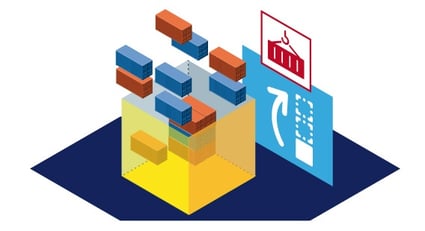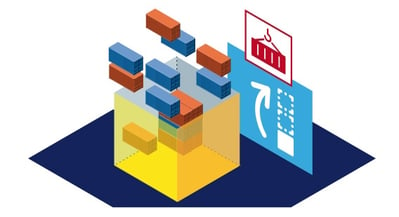How Industry 4.0 is Changing Product Life Cycles
Brian Hoey - October 25, 2018

 Let’s say you’re an amateur baker, and you’ve just agreed to participate in a pie bakeoff with some of the other bakers in your town. You have a few pie recipes that you like, but because the stakes are suddenly much higher than usual, you want to create a new recipes that improves on your existing ones, in order to better compete with your opponents. Most likely, this is going to mean finding new or old recipes to adjust and adapt, and then taking those adapted recipes and producing test batches of them, trying out the results, and producing new test batches with the tweaked recipes. This process, needless to say, would be incredibly time and resource intensive—not least of all because baking is an extremely fickle business, and it’s often difficult to predict the results of changes in ingredients or cooking time.
Let’s say you’re an amateur baker, and you’ve just agreed to participate in a pie bakeoff with some of the other bakers in your town. You have a few pie recipes that you like, but because the stakes are suddenly much higher than usual, you want to create a new recipes that improves on your existing ones, in order to better compete with your opponents. Most likely, this is going to mean finding new or old recipes to adjust and adapt, and then taking those adapted recipes and producing test batches of them, trying out the results, and producing new test batches with the tweaked recipes. This process, needless to say, would be incredibly time and resource intensive—not least of all because baking is an extremely fickle business, and it’s often difficult to predict the results of changes in ingredients or cooking time.
It might not be obvious to the casual observer, but there are more than a few similarities between the amateur baking competition and product life cycles in traditional manufacturing. They both involve a lot of prototyping, and production programs are ultimately based on the most successful of these prototypes. In both, it's also been difficult historically to know in advance what the result of any given change or adjustment might be on production processes overall. The difference (well, one of the differences) is that for amateur bakers this is likely to remain a fact of life, whereas for manufacturers there is a light at the end of the tunnel in the form of Industry 4.0, which is rapidly changing the journeys that products take from conception to production.
Rapid Prototyping
When people talk about Industry 4.0, they often talk about “cyber-physical systems.” But what does this phrase actually mean? For a particularly apt example, we might consider the 3D printing (aka additive manufacturing) workflows that are becoming increasingly prevalent in Industry 4.0 systems. These processes create objects in physical space, but they do so via a highly digital process with a set of analytical parameters that help to provide feedback throughout production. Not only is this emblematic of broader Industry 4.0 concepts, it simultaneously represents one of the most important ways in which those concepts are changing product life cycles.
Where, in the past, product developers would be stuck in the slow, resource intensive process that we alluded to above (which prevents businesses from moving new products through the prototyping stages in a fast, cost-effective manner), Industry 4.0 businesses can quickly and easily do small, 3D printed prototype batches of developing products. This can have the effect of dramatically shortening product lead times by enabling product designers to test new ideas and make adjustments on a rapidly accelerated timetable, meaning that businesses can put out new products more quickly and with a higher degree of certainty (due to the digital feedback endemic to the 3D printing process).
Product Customization
Another key hallmark of Industry 4.0 is its facilitation of product customization. How does it accomplish this feat? Essentially, digitized manufacturing processes pave the way for highly visible, highly adaptable production planning, meaning that it’s easier than ever to make small adjustments to production processes on a per order basis while slotting these customized products into your existing production workflows. Thus, when an order for customized products comes in, planners don’t need to reimagine their entire production workflows, but can instead adapt existing schedules and processes to create the custom products, thereby keeping production capacity at optimal levels and maintaining value that might have otherwise been lost due to production slowdowns, premium freight, or other disruptions related to complex orders.
What, exactly, does this mean for product life cycles in particular? Essentially, easier product customization will help make the product design process more collaborative and more individualized. It opens up a two-way stream of communication between manufacturers and their customers that helps to create synergy and build connections. If you were an automotive manufacturer seeking to purchase parts from an OEM, wouldn’t you be more inclined to place your trust and your business in the hands of an outfit that could work with you to provide exactly what you needed and meet your exact specifications? By presenting customers with that option, you position yourself as more agile, more dynamic, and more adaptable. To think back to your pie baking contest analogy, this might be the equivalent of collaborating with the judge of the contest in crafting the best confection for his or her palate.
Predictive Analytics
So far, we’ve seen the ways that Industry 4.0 gives automotive manufacturers and OEMs the tools to reduce their product development lead times and increase product customization, but how will these workflows be integrated into the rest of the automotive value chain in the smartest and most optimal way? The answer, simply put, is through predictive analytics integration. Predictive analytics in the world of Industry 4.0 is, right now, serving two distinct purposes: improving demand forecasts on the one hand, and creating “what-if” scenarios that predict the outcomes of various supply chain decisions on the other. Think of how this might be applied to the emerging workflows described above. If you’re a product designer, not only can you rapidly prototype products using additive manufacturing, you can also use advanced analytics processes to simulate the effect that any new production scheme will have on your existing capacity and inventory usage. In this way, you avoid the uncertainty and risk that typically come with a new product launch.
By the same token, predictive analytics could model the effects of customized products on your value chain, and also predict the demand for repeat custom orders in advance based on customer purchasing habits. In this way, production planners could potentially adapt their plans to include some of these custom orders before the orders are even placed—thereby ensuring that disruptions and unexpected supply chain events are minimized, all while virtually ensuring on-time delivery. Considering that many supply chain managers currently struggle with meeting short delivery windows on some orders, this is a huge value added proposition.
Much like the first two examples of changing product life cycles, predictive analytics workflows add both agility and added security to new and changing production processes. For all three, Industry 4.0 systems form the backbone of a new paradigm in product life cycles, one that’s typically faster, smarter, and more connected. As we move towards the future of supply chain management, this added speed and connectivity will help form the bedrock for new and exciting things to come. It might be a while before amateur bakers can use big data and analytics to predict the outcomes of their bakes in advance, or before they can instantaneously 3D-print test batches of new ideas—but for modern manufacturers in the Industry 4.0 era, these lofty predictions are quickly becoming realities.
LATEST POSTS
- Understand Circular Economy in The Manufacturing Industry
- How Can Industry 4.0 IT Integration Be Achieved Smoothly?
- The Significance of Order Sequencing in Discrete Manufacturing
- How to improve your Supply Chain Management: The Power of Control Towers
- Optimizing Human Resource Scheduling in Manufacturing: A Technological Approach



